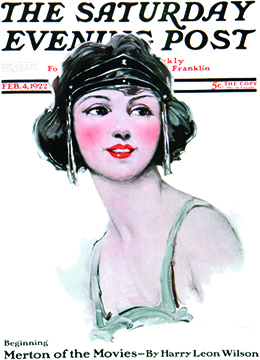| << Chapter < Page | Chapter >> Page > |
The 1920s was a time of dramatic change in the United States. Many young people, especially those living in big cities, embraced a new morality that was much more permissive than that of previous generations. They listened to jazz music, especially in the nightclubs of Harlem. Although prohibition outlawed alcohol, criminal bootlegging and importing businesses thrived. The decade was not a pleasure cruise for everyone, however; in the wake of the Great War, many were left awaiting the promise of a new generation.
Many Americans were disillusioned in the post-World War I era, and their reactions took many forms. Rebellious American youth, in particular, adjusted to the changes by embracing a new morality that was far more permissive than the social mores of their parents. Many young women of the era shed their mother’s morality and adopted the dress and mannerisms of a flapper , the Jazz Age female stereotype, seeking the endless party. Flappers wore shorter skirts, shorter hair, and more makeup, and they drank and smoked with the boys ( [link] ). Flappers’ dresses emphasized straight lines from the shoulders to the knees, minimizing breasts and curves while highlighting legs and ankles. The male equivalent of a flapper was a “ sheik ,” although that term has not remained as strong in the American vernacular. At the time, however, many of these fads became a type of conformity, especially among college-aged youths, with the signature bob haircut of the flapper becoming almost universal—in both the United States and overseas.

As men and women pushed social and cultural boundaries in the Jazz Age, sexual mores changed and social customs grew more permissive. “Petting parties” or “necking parties” became the rage on college campuses. Psychologist Sigmund Freud and British “sexologist” Havelock Ellis emphasized that sex was a natural and pleasurable part of the human experience. Margaret Sanger, the founder of Planned Parenthood, launched an information campaign on birth control to give women a choice in the realm in which suffrage had changed little—the family. The popularization of contraception and the private space that the automobile offered to teenagers and unwed couples also contributed to changes in sexual behavior.
Flappers and sheiks also took their cues from the high-flying romances they saw on movie screens and confessions in movie magazines of immorality on movie sets. Movie posters promised: “Brilliant men, beautiful jazz babies, champagne baths, midnight revels, petting parties in the purple dawn, all ending in one terrific smashing climax that makes you gasp.” And “neckers, petters, white kisses, red kisses, pleasure-mad daughters, sensation-craving mothers . . . the truth: bold, naked, sensational.”

Notification Switch
Would you like to follow the 'U.s. history' conversation and receive update notifications?